|
|
 |
|
|---|---|
Perhaps no country has offered as many DX targets as Indonesia. An archipelago of more than 13,000 islands stretching over 3,000 miles east to west, it was home to numerous national and local government stations, plus small private broadcasters. Many operated on shortwave, and power was usually low, making them attractive, if difficult, DX targets. The broadcasting structure of the country was complicated, as was the language. Unlike more familiar tongues (French, Spanish), it yielded few clues save for the IDs themselves, which often had to be grappeled with under adverse reception conditions. Although the World Radio Handbook contained basic frequency information, to DXers the stations were usually "black boxes," especially in the early days. The hobby press offered little information about them, and reception reporting was comparatively infrequent. This began changing in the late 1960s. One of the earliest in-depth examinations of Indonesian shortwave broadcasting was the "Special Section on Indonesia," which was published in the bulletin of the North American Shortwave Association in January 1967. It was written by NASWA "Shortwave Broadcast Center" editor Don Jensen, and it can be found here. As more information became available, Indonesia opened up to DXers. In the 1970s, surveys of Indonesian shortwave broadcasting were produced by the Australian Radio DX Club, as well as others. Australian DXers were instrumental in gathering accurate broadcasting information about their exotic neighbor. The research that appeared in the Indonesian DX Review, published by the Indonesian DX Circle of Osaka, Japan, a group devoted exclusively to Indonesian broadcasting, was also of importance. In the United States, a listener-based project to track known Indonesian stations had its origins in the mid-1980s. The Fine Tuning Special Publications division, under the late John Bryant, took over the project in 1986, and, in 1988, with the help of many listeners, published the first edition of the 13-page "Survey of SWBC Activity in Indonesia." The following year a second edition was published jointly by FT and Australia's OZDX group. In 1992 the Survey was substantially rewritten by Bryant and David M. Clark. The principal content was a database of key information on all stations, arranged by frequency and cross-referenced by location. Maps showing station locations were included as well. It was the most complete North American reference yet on the shortwave broadcasting activity in this much sought-after DX country. The 1992 edition of the Survey can be found here. A parallel publication, "A DXer's Handbook . . . Indonesia," was issued in 1985. Updated editions were published by FT in 1988 and 1991. Written by Bryant, the Handbook was a long-term reference work containing information on the government, history, culture and political subdivisions of the country, a description of the organization of the broadcasting system, maps, time charts, frequency-wavelength conversion tables, and valuable information on identifying and verifying Indonesian stations (plus graphics for designing form QSL cards). The 1988 edition can be found here. (Thanks to Linda Bryant for permission to post John's work.) QSLsAs information improved, more reception reports were sent to Indonesian stations, and DXers were happy to find that the stations were glad to hear from them, and usually QSLed. Replies were often in the form of letters rather than cards, and more often than not in Indonesian, but it just added to the exotica of it all, as did even the envelopes. The QSLs below, grouped together in PDFs, have been gathered from a number of sources. Following Group 1, which is devoted to the Voice of Indonesia, the QSLs are arranged first by island group (Bali, Irian Jaya, etc.), then alphabetically by location, and by year if there is more than one QSL per location. Click on "Group 2," "Group 3," etc. To get you in an "Indonesia" mood, listen to "Love Ambon," the song with which many RRI stations signed off. Readers are welcome to submit additional QSLs, which we will gladly add to this display. |
|
| VOICE OF INDONESIA | |
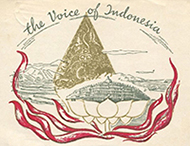 |
Group 1 Voice of Indonesia RRI (1955) Voice of Indonesia (1975) Voice of indonesia (1976) |
| BALI | |
 |
Group 2 RRI Singaraja (1990) Kang Garu Radio, Denpasar [program HQ] (1998) |
| IRIAN JAYA (WEST IRIAN) | |
 |
Group 3 |
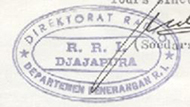 |
Group 4 UNTEA (U.N. Temporary Executive Authority Broadcasting Services), Hollandia-Kota Baru (1963) RRI Djajapura (1972) RRI Jayapura (1974) RRI Jayapura (1974) Radio Suara Kasih Agung, Jayapura (1993) |
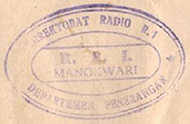 |
Group 5 RRI Manokwari (1970) RRI Manokwari (1970) RRI Merauke (1979) RRI Nabire (1979) RRI Serui (1981) |
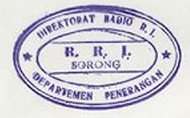 |
Group 6 RRI Sorong (1966) RRI Sorong (1977) RRI Sorong (1983) RRI Wamena (1988) |
| JAVA | |
Group 7 |
|
 |
Group 8 RKPKDT2 Banyuwangi (1979) RPKDT2 Blitar (1979) RRI Bogor (1978) RPKDT2 Ciampis (1978) |
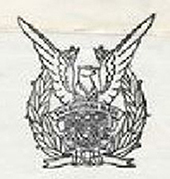 |
Group 9 RRI Djakarta (1970) Radio Angkatan Udara, Djakarta (1968) Radio Angkatan Udara, Djakarta (1971) |
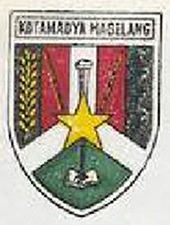 |
Group 10 RSPKDT2 Gresik (1982) RRI Jogjakarta (1972) RKPDK Jombang (1974) RKPKDT2 Lebak (1979) RSPDK Magelang (1986) RRI Malang (1975) RRI Madiun (1975) RKPDKDT2 Nganjuk (1979) RKDT2 Pamekasan (1978) RKPDKDT2 Pasuruan (1975) |
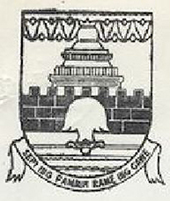 |
Group 11 RKPDT2 Sampang (1978) RRI Semarang (1969) RRI Semarang (1979) RDK Serang RPDK Sidoarjo (1974) RPDK Sidoarjo (1975) RPDK Situbondo (1974) RPDT2 Situbondo (1980) RKDT2 Sukabumi (1986) RPKD2 Sumedang (1990) RRI Sumenep (1982) |
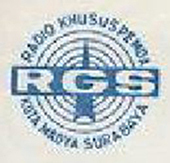 |
Group 12 NIROM Soerabaia (1936) NIROM Soerabaia (1936) RRI Surabaya RKIP Surabaya (1974) RKIP Surabaya (1975) R. Kotamadya Surabaya (1978) RKPDK Surabaya / R. Gelora Surabaya (1978) RKPDT Surabaya (1979) RKIP Surabaya (1988) |
 |
Group 13 RRI Surakarta (1973) RRI Surakarta (1973) RRI Suirakarta (1985) RSPDT2 Temanggung (1979) |
| KALIMANTAN | |
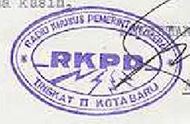 |
Group 14 RRI Banjarmasin (1973) RRI Banjarmasin (1977) RKPDT2 Kotabaru (1983) RRI Palangka Raya (1978) RRI Palangka Raya (1978) Studio Radio Daerah, Pelaihari (1983) |
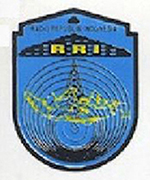 |
Group 15 RRI Pontianak (1968) RRI Pontianak (1994) RRI Pontianak (1997) |
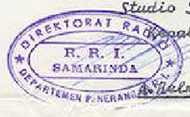 |
Group 16 RRI Samarinda (1973) RRI Samarinda (1978) |
| MALUKU | |
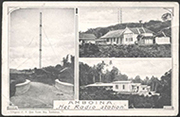 |
Group 17 RRI Ambon (1986) RRI Ambon (1993) |
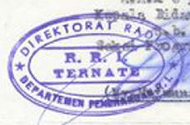 |
Group 18 RRI Ternate (1978) RRI Ternate (1979) RRI Ternate (1985) RRI Tual (1998) |
| NUSA TENGGARA | |
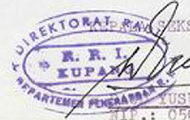 |
Group 19 RRI Kupang (1986) RPDT2 Selong (1981) RRI Mataram (1974) RRI Mataram (1986) RPDT2 Ngada (1982) |
| SULAWESI | |
 |
Group 20 |
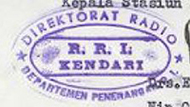 |
Group 21 RRI Gorontalo (1987) RRI Kendari (1984) |
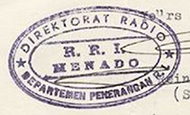 |
Group 22 RRI Menado (1970) RRI Manado (1973) RRI Manado (1984) |
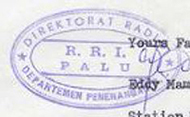 |
Group 23 RRI Palu (1977) RKPDT2 Tolitoli (1993) |
| SUMATERA | |
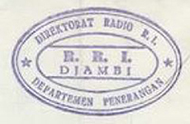 |
Group 24 |
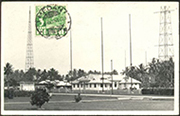 |
Group 25 NIROM Medan (1939) RRI Medan (1973) RRI Medan (1973) RRI Medan (1974) RRI Medan (1982) |
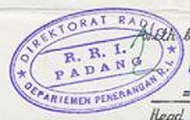 |
Group 26 RRI Padang (1973) RRI Padang (1994) RRI Palembang (1966) RRI Palembang (1972) RRI Pekanbaru (1974) RRI Pekanbaru (1976) RPDK Pematang Siantar (1974) |
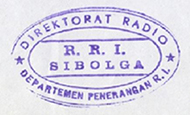 |
Group 27 RRI Sibolga (1976) RRI Sibolga (1988) RPDT2 Simalungun (1985) RRI Tanjungpinang (1978) |
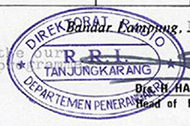 |
Group 28 RRI Tanjungkarang (1976) RRI Tanjungkarang (1983) RRI Tanjungkarang (1986) |
| TIMOR | |
 |
Group 29 RRI Dili (1984) RRI Dili |